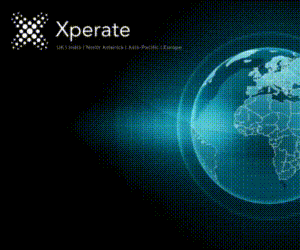Clean up redaction
Accidental human errors are increasingly leading to serious data breaches – a worrying prospect for law firms. Sam Moore, innovation manager and solicitor at Burness Paull, explains how his firm uses DocsCorp products to reduce these risks, improving lawyers’ quality of life in the process.
When, in early 2019, news broke that Paul Manafort’s lawyers had not properly redacted sensitive information from court filings – revealing that he had conceded discussing a Ukraine peace plan – the derision was widespread. They were seen as typical of anyone connected to the current administration: so incompetent they couldn’t even black out a few words in a document.
However, for lawyers, the news was unnerving: this was such an easy mistake to make. Information Commissioner’s Office (ICO) legal sector data breach reports shot up 112% between 2016 and 2018 – mostly due to human error, including not only failure to redact data, but data sent to the wrong recipient. If you add the perils of hidden data, there’s lots for lawyers to consider against a backdrop of ever-tightening data protection regulations.
How Burness Paull uses DocsCorp
Burness Paull is a specialist in tech (its head of technology won the Leadership Award at the Scotland IS Digital Technology Awards 2018) and it’s acutely aware of the threat. Sam Moore, the firm’s innovation manager, is the bridge between tech and the fee earners who use it. He says that Burness Paull has been using products from DocsCorp since around 2014. Today they form an essential part of his ‘toolbox’.
‘Proper’ redaction with pdfDocs
The traditional ‘black marker’ method of redaction (just blacking out the text with a thick pen) can be simple and effective. Some lawyers may think that reproducing this method ‘digitally’ simply means highlighting the text in black – however, this only ‘masks’ the text, it doesn’t truly redact it. This is what happened with the Manafort documents – readers found they could just reverse the highlighting and view the text under the ‘blackedout’ sections. DocsCorp’s pdfDocs is different, says Moore. “When you redact and you save the document, the redaction is ‘burned in’ – it can’t be undone or recovered after the fact.”
And pdfDocs is not the only way DocsCorp ensures lawyers redact correctly. Its suite is designed to protect busy lawyers from making mistakes. If a user were to redact unsafely (for example, highlighting in black, or drawing boxes over text) and then try to send that document through Outlook, the cleanDocs application would inspect the outgoing document and flag the problem. This ‘belt and braces’ approach is what drew Moore to the combination of pdfDocs and cleanDocs.
The data you can’t see
In 2018, one of the firm’s contentious teams flagged to Moore that certain opposing firms were repeatedly asking them to provide Word copies of already disclosed documents during disputes. Moore quickly realised that the opposing lawyers were after the metadata attached to those documents. “As far as we were concerned, we’d already disclosed the required documents. We shouldn’t be disclosing anything over and above that – including metadata – if that’s not been specifically covered by the disclosure.”
Rather than waste time arguing this point repeatedly, Moore suggested the team use cleanDocs, a metadata-stripping tool, which would allow his colleagues to safely hand over a clean Word document. More than 100 types of metadata can be removed in seconds by cleanDocs, preventing even the most overworked lawyer from inadvertently disclosing hidden information.
Hidden tracks
One often overlooked cause of a data breach is hidden track changes in Word documents. According to Moore, some users “may not appreciate the difference between ‘hiding’ and ‘accepting’ changes” – simply hiding a change will not remove previous wording from the document. Multi-authored legal documents can also become scattered with ‘digital fingerprints’ from each contributor. “Setting aside the time to ‘clean’ yourdocuments at regular intervals can quickly add up.”He needed a solution which could run on autopilot, and again turned to cleanDocs.“Consider a situation when you may not know that a document has tracked changes – perhaps it’s someone else’s document which has been handed to you, for example, if a client has prepared a technical schedule to go into a contract. What if that document contains tracked changes, but theview settings are hiding them? It’s valuable to have a product pick that up automatically and say ‘hey – did you know this was here?’”
Quality of life factor
DocsCorp’s products can also improve day-to-day quality of life. Moore says of the Manafort situation: “Many lawyers might read that story and think – ‘what if I did that?’ That kind of thing can keep you awake at night. It’s far better to have the right tools available, combined with the right training, to get this right every time”. Moore also talks about the ‘last mile’ of a transaction, when you are preparing the final version of a document for signature. “There is peace of mind in being able to be able to quickly run that document through compareDocs, just to be certain that the signature version matches the last agreed-upon position.”Also from DocsCorp, compareDocs allows users to quickly check differences between two or more versions of the same document.
Burness Paull today uses all three of DocsCorp’s document productivity products – compareDocs, pdfDocs and cleanDocs – and Moore has no doubt each has earned its place in the toolbox. “Some of our fee earners might only use one of them regularly, others might use all three every day, but I can only see demand going one way.”
This article featured in the March 2018 issue of Briefing Magazine: Take on the system

